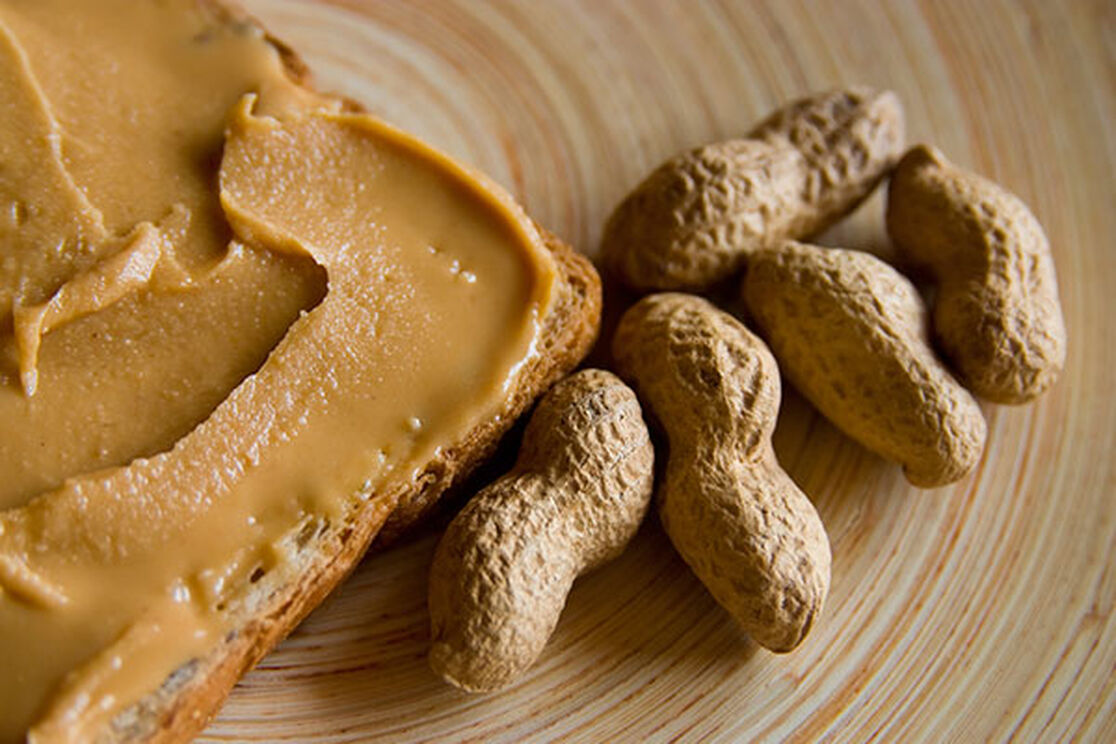If it feels like there are more kids with peanut allergies than you can remember from growing up, it’s because there very well may be! According to a recent study, in the United States alone, the prevalence has more than quadrupled in the past 13 years, growing from 0.4% in 1997 to more than 2% in 2010 (1). In fact, peanut allergy has become the leading cause of anaphylaxis and death related to food allergy in the United States (2). (Your portable injectable epinephrine is truly a lifesaver--don’t leave home without it!) When it comes to food allergy prevention, the introduction of solids is a critical time in children’s health and nutrition. Some exciting recent research discoveries are showing us some new possibilities for preventative approaches. To see how far we’ve come in the 21st century, let’s turn back the clock--don’t worry, we don’t have to go too far.
In 2000, the American Academy of Pediatrics (AAP) primarily recommended that parents avoid feeding peanuts to infants who might be at risk for developing atopic disease (eczema) until they were 3 years old (3). As we’ve already noted, however, doctors, researchers, and parents have continued to see the numbers of peanuts allergies increase, despite following these guidelines. By 2008, the AAP had retracted their recommendation, stating “that there was insufficient evidence for early food avoidance.” Soon after this retraction was issued, researchers in an observational study (i.e., looking closely at a particular population) noticed that the prevalence of peanut allergy among Jewish children in London who avoided peanut-based products in the first year of life was 10 times higher than that of Jewish children in Israel who had consumed peanut-based products before their first birthday. This seemed to contradict all we knew about food introduction and allergy prevention...so, what did this all mean?
To prove if earlier introduction of highly allergenic foods (before 11 months of age) could help prevent allergies, researchers began a landmark controlled research study. In the Learning Early about Peanut Allergy (LEAP) study (5), Du Toit et al. randomly assigned more than 500 infants at high risk for peanut allergy to receive peanut products (consumption group) or to avoid them (avoidance group). At 5 years of age, the children were given a peanut challenge to determine the prevalence of peanut allergy. The findings were a great leap, indeed: Overall, the prevalence of peanut allergy in the peanut-avoidance group was 17.2% compared to 3.2% in the consumption group (5)!
So where do we go from here? Given the results of this well-designed, prospective, randomized trial, which demonstrates that early introduction of peanut-based products dramatically decreases the risk of peanut allergy development, will guidelines change? We still don’t know whether this applies to other highly allergenic foods like milk, eggs, shellfish, but this research does give hope that there’s an approach that may help significantly reduce the rates of life threatening food allergies. While we wait for more definitive answers, avoidance is the best treatment for those who have a life-threatening peanut allergy. Since this exciting research is so new, be sure to bring it up with your baby’s pediatrician and see what they think about it.
References:
- Bunyavanich, S., Rifas-Shiman, S.L., Platts-Mills , T.A., et al. (2014). Peanut allergy prevalence among school-age children in a US cohort not selected for any disease. Journal of Allergy and Clinical Immunology, 134, 753-755.
- Gruchalla, R. S., & Sampson, H. A. (2015) New England Journal of Medicine, 372, 875-877.
- American Academy of Pediatrics, Committee on Nutrition. (2000) Hypoallergenic infant formulas. Pediatrics, 106, 346-349.
- Greer, F.R., Sicherer, S.H., & Burks, A.W. (2008) Effects of early nutritional interventions on the development of atopic disease in infants and children: the role of maternal dietary restriction, breastfeeding, timing of introduction of complementary foods, and hydrolyzed formulas. Pediatrics, 8(121), 183-191.
- Du Toit, G., Katz, Y., Sasieni, P., et al. (2008) Early consumption of peanuts in infancy is associated with a low prevalence of peanut allergy. Journal of Allergy and Clinical Immunology, 122, 984-991.
- Du Toit, G., Roberts, G., Sayre, P.H., et al. (2015) Randomized trial of peanut consumption in infants at risk for peanut allergy. New England Journal of Med, 372, 803-813.
We aim to provide you with the most honest and credible information possible. This article was reviewed for accuracy by The Honest Team and was written based on sources that are linked at the bottom of the article.
blog_review_statement



